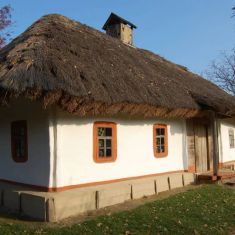
 6
6









To be is to do …Kant
To do is to be ..Nietzsche
Do be do be do…Sinatra
Scooby dooby do …St. Thomas
 4
4




 6
6




John Daley Bendigo, Australia The Enemy of progress is the hope of a perfect plan
Benefits of rainfall collection https://permies.com/t/88043/benefits-rainfall-collection
GOOD DEBT/ BAD DEBT https://permies.com/t/179218/mortgages-good-debt-bad-debt
 1
1




 2
2




Cristobal Cristo wrote:I would not mix two different building systems. Any interface between materials is a potential problem.
I would rather do 3 wythe wall: block - insulation - block. Also, I would never like to use straw in humid Illinois despite people thinking otherwise. Rain is the enemy of materials that deteriorate with water.




Kyle Hayward wrote:Many people build strawbale homes in wet climates, it is humidity in tropical climates that can cause problems. A good Natural Hydraulic Lime (NHL) plaster would work well.
 1
1




Cristobal Cristo wrote:
Kyle Hayward wrote:Many people build strawbale homes in wet climates, it is humidity in tropical climates that can cause problems. A good Natural Hydraulic Lime (NHL) plaster would work well.
It's possible, but not necessary the best choice. In California many people (like 99.9%) build houses from sticks and OSB board in the areas that are raged by wildfires. They burn nicely, I saw it. Then they rebuild - the same way.
In general I would not recommend a system that needs extensive plastering. It's a lot of work.
I'm plastering my house and we are only half way done and only in interior so far. I do it, because I like lime plaster finish and whitewash, but it's not necessary in my case, but for the straw it's a must.
Also, NHL is not something that is cheap or easily available. If anything I would go with regular high calcium lime plaster.
 1
1




I would not mix two different building systems. Any interface between materials is a potential problem.
John Daley Bendigo, Australia The Enemy of progress is the hope of a perfect plan
Benefits of rainfall collection https://permies.com/t/88043/benefits-rainfall-collection
GOOD DEBT/ BAD DEBT https://permies.com/t/179218/mortgages-good-debt-bad-debt











 2
2




 4
4









 1
1








 2
2




 3
3




Jonathan Carr wrote: taking inspiration from the traditional Ukrainian mazanka, lime-plastered earthen buildings built in southern/eastern Ukraine, a place with a lot of similarity with northern/central Illinois in climate and terrain.
 2
2




John Daley Bendigo, Australia The Enemy of progress is the hope of a perfect plan
Benefits of rainfall collection https://permies.com/t/88043/benefits-rainfall-collection
GOOD DEBT/ BAD DEBT https://permies.com/t/179218/mortgages-good-debt-bad-debt




